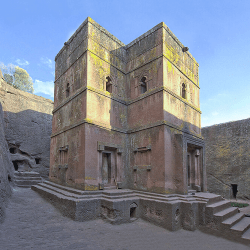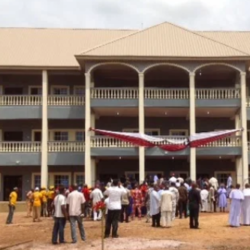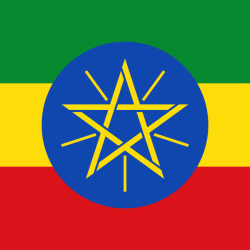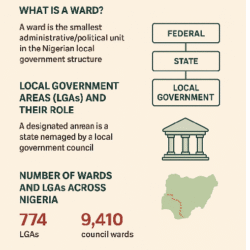Census-taking is a cornerstone of civilizational development—an essential act of governance, resource allocation, and societal planning. While many modern states pride themselves on centuries of demographic documentation, Egypt stands uniquely apart. The land of the Pharaohs isn’t just a cradle of civilization—it is, as historical and archaeological evidence shows, the birthplace of the world’s earliest censuses. From inscribed papyrus scrolls and temple carvings to modern digital registries managed by the Central Agency for Public Mobilization and Statistics (CAPMAS), Egypt’s journey in census history is as enduring as its pyramids.
Origins of the Census in Ancient Egypt
Egypt’s rich census tradition dates back over 5,000 years. The first known census is believed to have occurred in 3340 BC, followed by another in 3050 BC. These counts were more than mere tallies of people; they formed the foundation for a structured state apparatus capable of managing taxation, labor, and agricultural production across the Nile Delta.
Documentation from this era—preserved on papyrus and carved into temple walls—reveals the high level of administrative sophistication achieved by the ancient Egyptians. These early censuses were not only population counts but also inventories of cattle, land, and grain, used primarily for tax assessment and military conscription.
Census and the Pharaonic Era
The Pharaonic state relied heavily on systematic data collection to maintain control over its vast territories. Census data were meticulously recorded and often conducted alongside land surveys, especially following the annual Nile floods. Ancient scribes played a central role in this bureaucratic machinery. Their records, found in tombs and on obelisks, indicate an administrative rhythm that was both methodical and monumental.
Kings like Ramses II and Thutmose III are known to have conducted detailed counts for purposes of taxation, resource distribution, and military organization. The comprehensive records served as a model for later civilizations and underscore the centrality of demographic awareness in Pharaonic governance.
The Islamic Period and Census Under Hesham Abdel Malek
Fast-forwarding to the Islamic era, census efforts continued under various caliphates. One notable instance occurred in the reign of Caliph Hesham Abdel Malek Ben Marwan in 600 AD. This early Islamic census marked a turning point, incorporating more comprehensive data such as population size, age distribution, and residential locations.
Conducted through the newly structured Islamic administrative framework, the census served dual purposes: facilitating fair taxation and maintaining order among expanding urban and rural settlements. It was also instrumental in organizing state welfare and military recruitment, showcasing the enduring importance of population data across dynasties and faiths.
The Napoleonic French Expedition and the 1800 AD Census
A significant leap in modern census methodology occurred during the French Expedition to Egypt in 1798–1801. Under Napoleon Bonaparte’s orders, French scholars and officers conducted a detailed demographic study in 1800 AD. The aim was to understand Egypt’s societal structure and resource potential.
This census marked Egypt’s entry into modern statistical analysis. Inspired by Enlightenment principles, it introduced European-style enumeration and record-keeping practices that heavily influenced future administrative protocols in Egypt. This event laid the groundwork for the establishment of institutionalized statistical bodies in the 20th century.
The Role of CAPMAS in Egyptian Census Today
Founded in 1964, the Central Agency for Public Mobilization and Statistics (CAPMAS) became the official body responsible for all national statistical operations in Egypt. It was established by Presidential Decree No. 2915 and is currently affiliated with the Ministry of Planning and Economic Development. CAPMAS stands as a testament to Egypt’s continuous commitment to demographic and statistical advancement.
Under the leadership of Brigadier General Abu Bakr al-Gendi, CAPMAS gained visibility both locally and internationally. He famously asserted that Egypt is among the first nations in the world to conduct a census, backed by substantial archaeological and historical evidence.
Today, CAPMAS leverages cutting-edge technologies such as geographic information systems (GIS), mobile data collection apps, and digital census portals. These innovations ensure accurate, timely, and secure data collection, aligning Egypt with global best practices.
Global Recognition of Egypt’s Census Legacy
Egypt’s pioneering role in the history of census-taking has earned it a place in UNESCO archives and academic research. International demographic historians often cite Egypt as a primary example of early state-level statistical governance. Unlike other ancient civilizations where censuses were sporadic or rudimentary, Egypt institutionalized the practice from its earliest days.
This continuity—stretching from papyrus scrolls to online census dashboards—illustrates a national ethos centered on planning, order, and foresight. Egypt’s historical contributions are not just academic footnotes but foundational influences on how the modern world understands governance and demography.
Census as a Reflection of Egyptian Civilization
The act of counting people, resources, and land in Egypt was never just bureaucratic—it was deeply cultural. The meticulous record-keeping reflects Egypt’s reverence for knowledge, administration, and centralized control. Whether under Pharaohs, Caliphs, or Presidents, census-taking was essential for the strategic functioning of the state.
Furthermore, these records enabled monumental feats such as the construction of pyramids, irrigation systems, and massive temples—all requiring labor organization and resource management, directly linked to census data.
Census in Modern Policy and Planning
In present-day Egypt, the census continues to serve critical national objectives. The data collected is instrumental in:
- Planning health services and education infrastructure
- Designing social welfare and economic policies
- Urban and rural development
- National defense and public mobilization strategies
The most recent national census, conducted in 2017, involved over 45,000 enumerators and covered millions of households using digital tablets for the first time. This census not only measured population but also housing quality, educational attainment, employment status, and access to healthcare—painting a holistic picture of Egypt’s socio-economic fabric.
Challenges and Evolutions in Census Taking
Despite its long legacy, Egypt’s census efforts have not been without challenges. Political instability, rapid urbanization, and technological barriers sometimes hinder data accuracy. Nonetheless, CAPMAS has consistently evolved its methodologies, introducing biometric data, machine learning algorithms, and cloud-based storage systems.
Public awareness campaigns and collaboration with international bodies such as the UN and World Bank have also contributed to improved accuracy and transparency.
Comparison with Global Census Histories
While ancient Rome conducted censuses for tax purposes and China maintained detailed household registries, Egypt’s practice predates both. Unlike the periodic Roman censuses or the caste-oriented Indian ones, Egyptian censuses were multi-dimensional from the outset, capturing economic, social, and geographic data.
Egypt’s consistency in census-taking, across millennia and ruling systems, makes it a unique case in the annals of human civilization.
Education and Public Awareness of Egypt’s Census Legacy
Museums across Egypt, such as the Egyptian Museum in Cairo and the Bibliotheca Alexandrina, display census-related artifacts. Schools now include census history in national curricula, fostering awareness among youth about Egypt’s ancient administrative achievements.
Documentaries, publications by CAPMAS, and academic research further disseminate this knowledge, ensuring that Egypt’s census legacy continues to inspire future generations.
Conclusion
Egypt’s journey in census-taking is more than just a historical curiosity—it is a blueprint for understanding how civilizations grow, adapt, and endure. From tallying cattle on papyrus in 3340 BC to deploying satellite-enabled digital surveys in the 21st century, Egypt has consistently demonstrated an unrivaled commitment to understanding its people and resources.
This legacy is not only a source of national pride but also a guiding light for countries striving to build robust, data-driven governance systems. Egypt’s census history is, undeniably, a testament to the enduring power of knowledge, planning, and statecraft

FAQs
1. What was the earliest known census in Egypt?
The earliest known census in Egypt dates back to 3340 BC, making it the oldest recorded population count in human history.
2. Who currently oversees census operations in Egypt?
Census operations are managed by CAPMAS—the Central Agency for Public Mobilization and Statistics.
3. How did the French Expedition contribute to Egypt’s census history?
In 1800 AD, the French conducted a modern-style census during Napoleon’s expedition, introducing European statistical methods.
4. What technologies does Egypt use in modern censuses?
Modern Egyptian censuses employ digital tablets, GIS mapping, biometric systems, and cloud computing for accuracy and efficiency.
5. Why is Egypt’s census history globally significant?
Egypt is recognized as the first country to conduct systematic censuses, influencing administrative practices in civilizations around the world.









